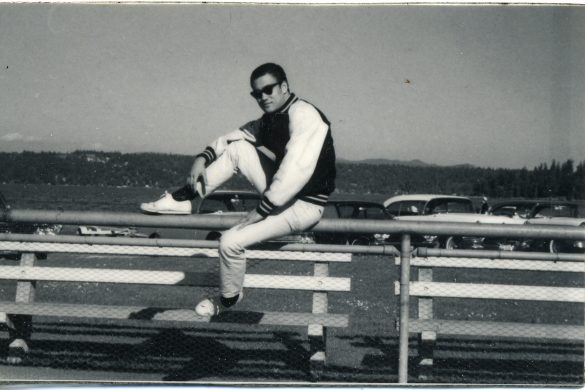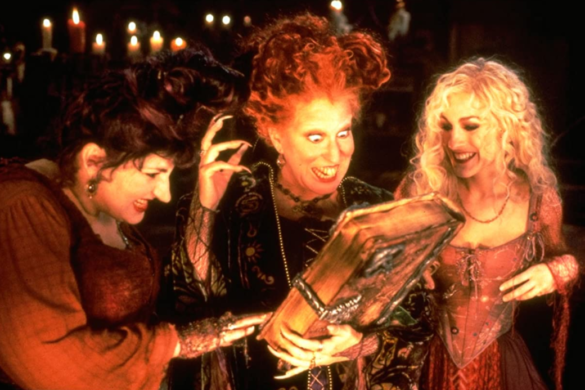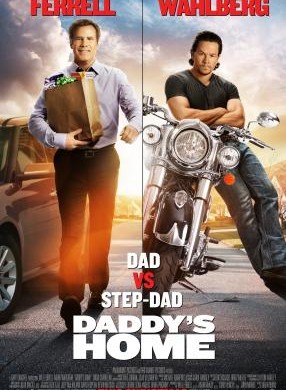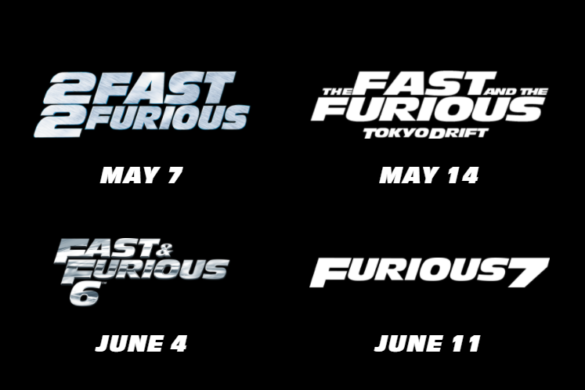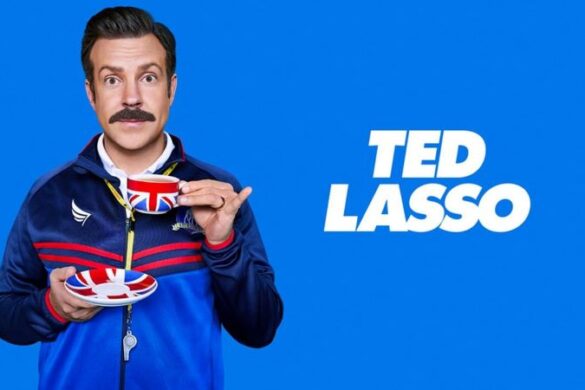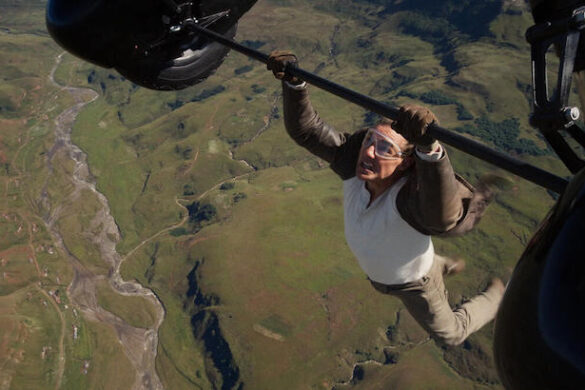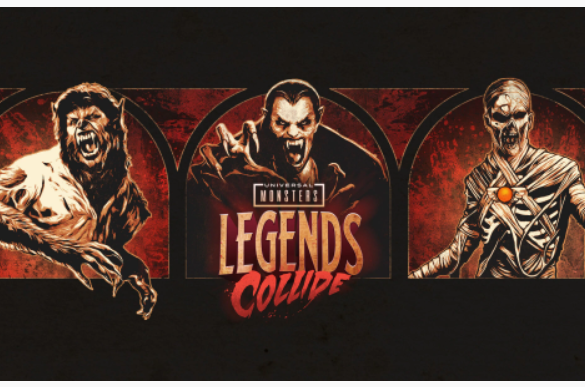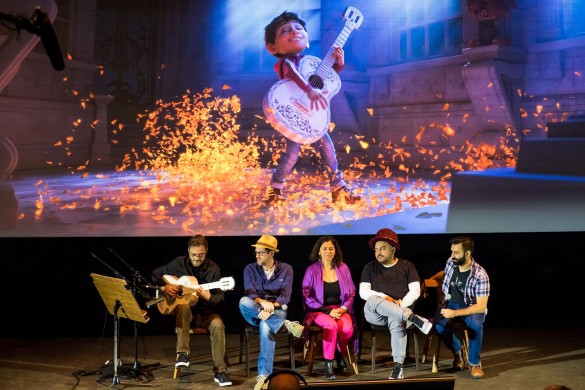Marvel Studios returns to its action-packed political thriller roots with “The Falcon and The Winter Soldier.” In it, Sam (Anthony Mackie) and Bucky (Sebastian Stan) are reeling with the traumas of coming back from the other side of the Blip while also having to contend with a new international threat known as the Flagsmashers.
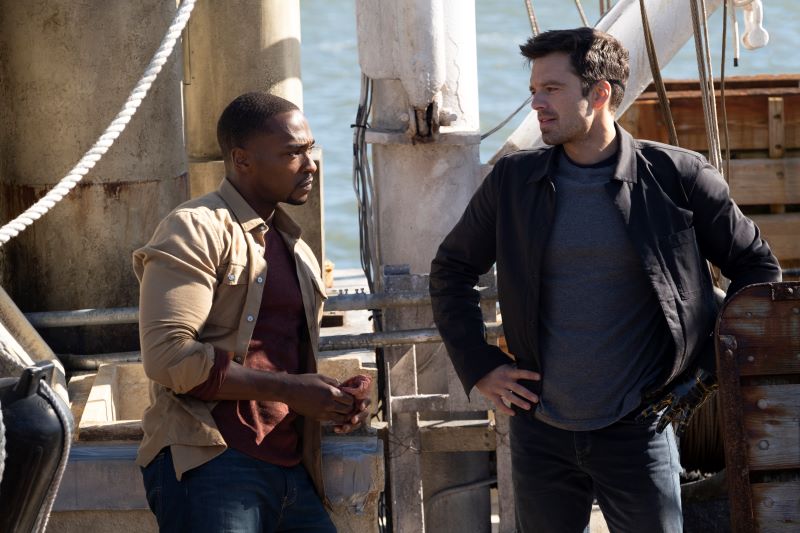
After screening the first episode, ThatsItLA joined their fellow bloggers and journalists for the international virtual press conference of “The Falcon and the Winter Soldier” and had a chance to talk to Marvel Studios president Kevin Feige, showrunner Skogland, head writer Malcolm Spellman, and stars Anthony Mackie and Sebastian Stan about the upcoming season, what to expect from their characters, and more.
Here are the 9 things we learned from the show.
1 – Marvel Studios’ Second Streaming Series Liftoff
“The Falcon and The Winter Soldier” expands the Marvel Cinematic Universe on the streaming service in ways that the theatrical films could not. This means exploring the relationship between the titular characters since they got little screentime compared to their big-name superhero counterparts.
“It was really meant to prove to ourselves, to the audience, and to Mr. Mackie and Mr. Stan that just because it’s on TV doesn’t mean it’s not going to be as big as it could possibly be as a movie,” Feige said. “We were working just as hard on it and putting all of our blood, sweat, and tears into it.”
And episode one really lives up to that long-form cinematic television. “It really starts off with a bang because we kept saying if we’re going to do a series with The Falcon and Winter Soldier in it, start off with the best action that we’ve ever seen,” Feige said. But more to the character’s points, we will learn about them as individuals and who they are outside of the superhero world.
“We knew a little bit about poor Bucky Barnes and what he’d been through. Sam Wilson is an inherently moral man and had been in the service and worked with PTSD. But We didn’t know much about him,” Feige said. “So, it was really an opportunity to go to go deep.”
2 – Cinematic Approach to Serialized Streaming Television.
Without going too much into detail, episode 1 really is a cinematic experience but just contained within a smaller frame. All that being said, Skogland says she approached it like a film from the beginning. “As Kevin said, we were making a six-hour film. So, we just figured out where to snip it at certain hour marks,” she said. Together with Spellman, they looked at shows and movies that were within the buddy cop paradigm.
Skogland also looked at David Lean and “Midnight Cowboy” as inspirations to help shape “Falcon and The Winter Soldier’s” uniqueness. “It was important that we respected that we were going to be into people’s perspective,” she said. “And we really had to go in deep character and be able to sustain that.” And she considered the camera work and Bucky’s therapy arc so that the audience could be more intimate with these characters.
And there is a lot more work that goes into creating a six-episode miniseries instead of creating a two-hour feature film. “I’ve been calling the movies a snack, and this is like the meal,” Skogland said. “You really can get involved with the characters in six hours that you’re just not able to in a film, particularly because the films are often very, you know, they’re high octane already, and they’re immersed in some world-saving event.”
“On a series, you’re able to meander a little bit, and we’re able to get inside the lives of our characters, we’re able to do twists and turns that are a little less straight line to the end,” Skogland continued. “I love this space of being able to get inside the characters, get inside their lives, and also world build.”
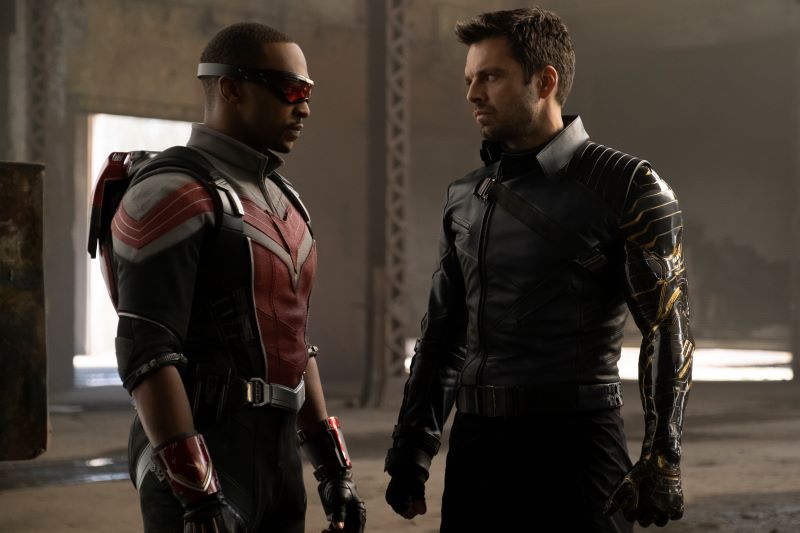
3 – “The Falcon and the Winter Soldier” Buddy Cop Story
Spellman says a 12-second scene in “Captain America: Civil War” laid out the groundwork for the “Falcon and The Winter Soldier’s” buddy cop relationship. “Every single Marvel fan, Kevin Feige, all his cabal partners, knew that these two guys were going to be able to support a movie or franchise,” he said. “Doing the interviews, I feel like you can’t really take credit for the tone because, in that 12 seconds, everybody knew what it was going to be. And that’s just that sort of a transcendent thing.”
Spellman also loved the tonal range between the two and how many opportunities it presented to flesh out their relationship and bring out the buddy cop aspects. “You can go from as gritty as ’48 Hours’ to as comedic as ‘Rush Hour.’ But in between, there’s sort of that first ‘Lethal Weapon’ and that first ‘Bad Boys,’ he said. “What we liked about it was it allows Sebastian and Anthony to do what they do and create that magic, but also allows the broader creative to, if you need to, take on real issues, or if you need to get into something very moral.
“I think the great thing about it is, and what I enjoy so much, you can’t find two people further opposite than each other than Sebastian,” Mackie said. “But there’s mutual respect and an understanding appreciation of that person. We listen, learn and, and teach each other a great deal.”
“I always believed you’re always better because of the people you surround yourself with,” Stan said. “I feel like in acting and the scenes, it’s always about the people that bring out things in you. It’s about the tone, and we were trying to find a very fine line between making sure these characters are grounded in reality and deal with very serious issues. And then there another piece about having fun and connecting. I always turn to Anthony for guidance for that.”
4 – Diving Into These Characters
It cannot be stressed enough how important it is that these shows exist so that the titular characters can have the space to step out of the supporting role and flex their superhero muscles while also getting to know them on a more intimate level. This also means changing up the character’s comic book origins story to be more reflective of the times we live in now and, to a certain extent, honor the actors who play them.
Mackie thought it was great that the miniseries dives deep into the character’s psychological complexities. “You know, the idea of Sam Wilson, he’s always evolved in the world of the Marvel comic books, and now, he’s evolved in the Marvel Cinematic Universe,” he said. “When Sam first started, he was a hustler from Harlem, NY. And then, as African American culture evolved, Stan Lee evolved him in the comic book into different incarnations of themselves. I’m excited for everyone to see the new and improved Sam Wilson.”
And the same can be said for Bucky, who has gone through his own set of personal traumas to get where he is at now. While he may be in therapy, he makes amends for his high crimes that he committed as the Winter Soldier. And after spending ten years with the character, it is hard not to grow alongside him.
“We had established a character a certain way, and there were certain things about him that I knew, and I was very comfortable and familiar with tonally in the movies,” Stan said. “Then we have to kind of go into this ‘what is he like, now’ part that was really honing in on his sense of humor. That really came into the tone of the dynamic with Sam Wilson, along with my own dynamic with Anthony.”
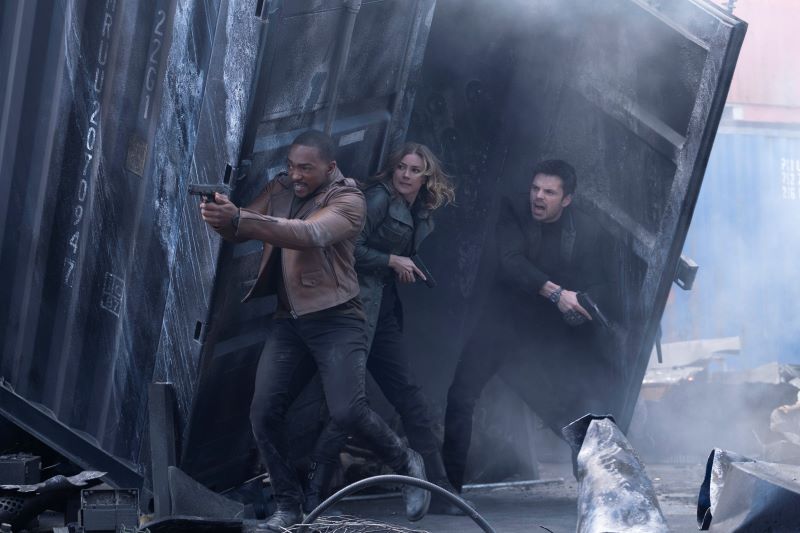
5 – Psychological Trauma
There are definitely traumas to explore with these characters considering what happened to them pre-Blip and how they are attempting to make up for lost time post-Blip. To dive into the respective backstories, see their family, and even some of their surroundings only better the characters for the audience.
“We’re in a place now where we want the audience to know and learn these new characters, especially since Kevin Feige killed Iron Man,” Mackie said. “We have to introduce these new characters to the audience and give them that relationship, that history that they’ve built over ten years. And we now have six episodes to play catch up. It’s always great to learn more and give more about your character, and it does not feel like heavy exposition or a lesson when it feels like a good cinematic experience.”
“The whole subject of PTSD and the experience that they both share as soldiers and as men who have served is one of the things that bring them together,” Stan said. “There’s an honor code between them, even though they come from different ideas or opinions about things.”
“PTSD is not something that you’re done with, you know. It’s really something that that one has to continue to grow with and to become better at dealing with,” Stan continued. “And so, you know, obviously, it’s a major part of our show, and it grounds both of these characters in very realistic ways.”
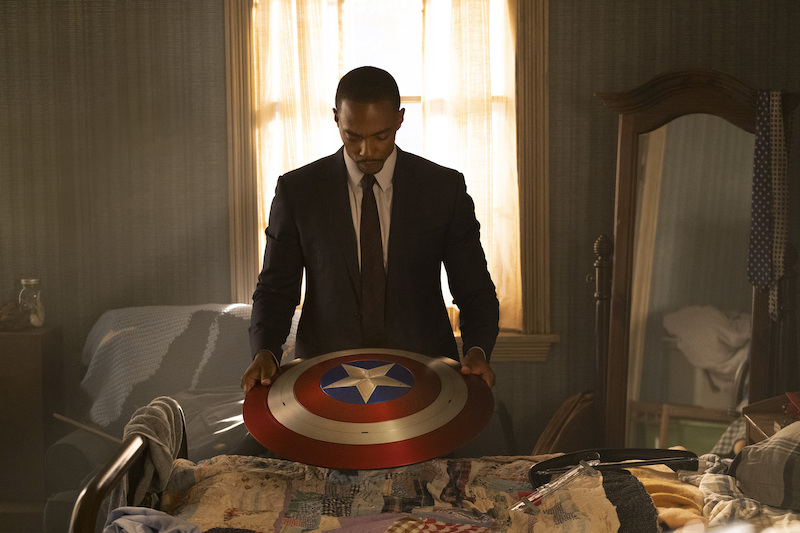
6 – Unworthy
Sam’s hesitancy to accept the shield and become the new Captain America is completely justified considering what the shield and the name symbolizes. And after serving alongside his fellow soldier and best friend over the course of four films in six years, the pains of not being able to do that any longer has affected the winged-hero. “There are still people out there that really appreciate camaraderie and friendship. And Sam is one of those people. He enjoys his friend,” Mackie said. “You don’t want to see Steve Rogers go away. You don’t want to see Captain America go away. Because just like Captain America was your Cap, Captain America was Sam Wilson’s Cap.”
7 – The Big Picture
As much as “Falcon and The Winter Soldier” is built on an MCU foundation and draws its inspiration from buddy cop material, it still deals with real-world repercussions and the fallout of Thanos’ actions. “Every villain in the series would tell you that he or she is a hero,” Spellman said. “This continuum from what happens after “Avengers: Endgame,” that galvanizes and affects everybody on the planet at the same time and creates a nice cohesion and direct lineage to the MCU.”
Additionally, “Falcon and the Winter Soldier” also addresses some real-world issues regarding economics and race. One could say these themes add humanity to this superhero miniseries. But Spellman did not tackle them one issue at a time but spent months weaving in those themes into the six episodes. “Vertical storytelling is features that are compressed for time and immediate action. They all build towards one event,” he said. “A series allows horizontal storytelling. And the rhythm of the storytelling is completely different in that characters can befriend each other fall out, and evolve in a much different way.”
8 – Finding the Right Story
After “WandaVision,” “Falcon and The Winter Soldier” is the second of the Marvel Studios miniseries set to premiere exclusively on Disney+. So there is more complexity for Feige and his team to decide which characters deserve to have expanded stories or which ones they will introduce.
“It’s taking advantage of the different storytelling medium that we have with Disney plus, and what excites us in the room? What makes us interested excited? What could happen at the end of an episode that would keep us interested,” Feige said. “It is the same balance that we’ve been trying to strike for the last ten plus years. And figuring out how to exceed expectations, but also how to subvert expectations.”
And Feige sees what can become of giving fans what they need versus giving what they want. “I’ve never thought of it in terms of what people want versus what they need. It is how do you provide the best, most engaged level of storytelling to the audience,” he said. “There are times where something comes totally out of left field that even we weren’t anticipating. For instance, the aeronautical aerospace engineer that is asked about that turns into a whole thing.”
9 – The Future of Marvel Studios On Disney+
Even with the ginormous success of “WandaVision,” Marvel Studios was already deep into the planning stages of future series that would debut on Disney+. This includes “Falcon And The Winter Soldier.” “We were pretty committed even before that. We were in the works on ten-plus series and have been for a number of years now,” Feige said. “It’s just another marker of us staying the course and the fans willing to go with us to new, unexpected places, which is what excited us about the opportunity to do series on Disney plus.”
And it appears the trauma that these characters are experiencing will be a recurring theme throughout phase four of the Marvel Cinematic Universe. “As crazy and extraordinary and science fiction and fantasy and supernatural as the MCU can get, it’s grounding the character experiences and emotions of the character that’s always by far the most important anchor for any story,” Feige said. He says these traumas offer opportunities to tell even more stories and expand on key characters.
Moving aside to some of the upcoming projects that are set to debut on Disney+, Stan said he was most excited to see Oscar Isaac as Knightmoon. Of course, he quickly corrected himself when Mackie gave him grief for mispronouncing the hero’s name, which actually is Moonknight.
And as much as Mackie would like to cameo in She-Hulk, he took the time to make a simple ask Feige if he could appear in the Blade movie. But if he had to cameo in “She-Hulk,” he would want to say just one line just like Joy Bryant did in “Spider-Man,” starring Tobey Maguire.
As for the Falcon and Winter Soldier’s responsibility of leading the younger generation of heroes in the wake of losing Iron Man, Cap, and Black Widow, Mackie acknowledges how “Avengers: Endgame” was a “monumental shift” in the MCU. “The idea of that film is something larger than I think anyone imagined. So, our goal is we didn’t want to be the first crappy Marvel project,” he said. “Our job was to take the torch and not make a bad show. And I’m very happy to say that Steve Rogers will be proud that our show does not suck.”
“The Falcon and The Winter Soldier” is set to debut exclusively on Disney+ on March 19, 2021.


